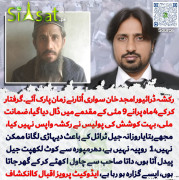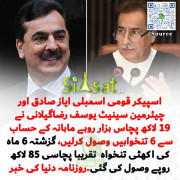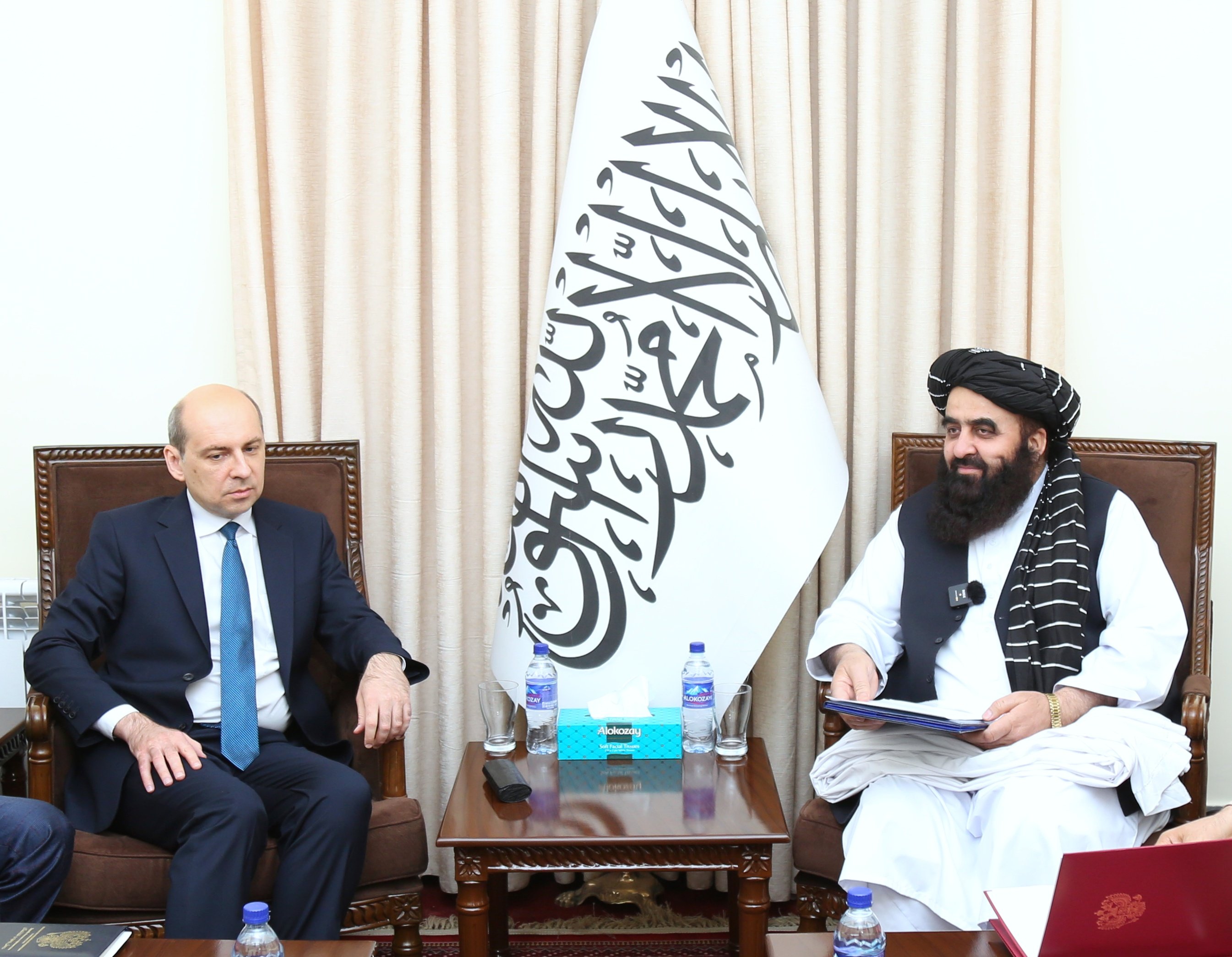اب قرآن تو معلوم اور نامعلوم فیکٹ پر بات کرتا ہے مثال کے طور پر قرآن میں اللہ تعالی قسم کھاتے ہیں کہ قسم ہے اس جگہ کی جہاں ستارے پیدا ہوتے ہیں تو یہ اس وقت کس فلکی ماہر کو معلوم تھا کہ ستارے بھی پیدا ہوتے ہیں اور مرتے ہیں یہ آج کے زمانے میں جا کر معلوم ہوا ہے چودہ سو سال پہلے تو اسکا کسی کو ادراک ہی نہیں تھا قرآن کا بغیر کسی تخصیص کے محفوظ رہ جانا ہی اسکے اللہ کی کتاب ہونے کی دلیل ہے باقی رہے تم تو اللہ نے تو قرآن میں پہلے ہی فرما دیا ہے کہ لا اکراہ فی الدین تو تم اپنی رائے قائم کرنے میں آزاد ہوAll I am saying is, if the author of book claims to be outside our world but the contents of the book are strictly from what is known already then I am justified in being skeptical about that claim.
You are using an out of date browser. It may not display this or other websites correctly.
You should upgrade or use an alternative browser.
You should upgrade or use an alternative browser.
Miracles of the Qur'an
- Thread starter Pakistani1947
- Start date
There is nothing in the Quran that humans did not know before. Most of it is borrowed from Christian and Jewish books rest is from local Arab Myth with a mix of Greek science.
As for big bang theory, its a fraudulent translation of Quran and does not exist in previous tafsirs. The author of the sahih international translation added the translation of expanding universe after scientists discovered the universe is expanding. Previously the Quran was translated as saying an expanse meaning large or wide or spread out, not expanding. This is intellectual dishonesty.
dear vitamin c, I understand where you are coming from but to respond to your criticism of the quran I need some hard work from yourself. In my view you are approaching the quran from a very wrong angle.
First of all there is no point in arguing over the quran if you do not accept existence of God. For that purpose we have had some discussions to which I was referring in my previous post for you. So till you rationally come to a conclusion that it is a valid possibility that God could exist there is no point in arguing over the quran.
If you accept this possibility then we both together need to build a case for the existence of God to begin with to prove this claim. It is then we can turn to the quran to explain for us what we ought to know in this regard. There is no sense in bringing in the quran otherwise.
The while you think it is a nonsense to believe in existence of God because there is no God or there cannot be any God whatsoever then it is you who needs to prove not only for others whom you tell there is no God but also for your own very self that it is not possible for a God to exist. Now if you cannot prove nonexistence of God and yet you keep saying there is no God then you fail yourself as well as everyone else whom you tell there is no God and they accept your idea.
However if you accept possibility of existence of God then our next target of discussion becomes the quran. Why? Because this is the only evidence we have allegedly from God so we must get ready to examine this evidence properly.
This is where we must learn things we need to learn in order to try to understand the quranic message properly. It is because there is little sense in arguing with each other over the content of the quran randomly.
This is where in come the facts and the rules we need to understand properly before we even open the quran. For example, nothing can be understood properly by human beings unless there is a context to it. This is why the question, what is the proper context of the quranic text?
Does anyone who claims to know the quran understand the context of the quranic text properly? If one does then one can explain it the way one understands the quran otherwise we all need to work it out as individuals. This is where another question arises ie how to work out the proper context of the quran?
All this is needed if we wish to discuss things sensibly otherwise we are wasting each other's precious time.
In this context please answer the question I ask, do you accept possibility of existence of God or not? If you do not then what are your reasons for that? We can discuss things about those reasons.
Here I should also make clear for you the point that in a discussion either one side of argument must be allowed to present its case first or the other side. We all cannot start arguing with each other randomly or it will all end up in a chaos and confusion for everyone.
In case of arguments for existence or nonexistence of God, we must have same criterion or standard to judge things by. For example, if you accept possibility of existence of God then you must explain the way whereby God could prove his existence to us human beings. Why? Because then we will come to realise the place of revelation of God in grand scheme of things. It will then lead us to proper way of understanding the quran properly.
All these like steps will help us understand things about the quran which will help us understand the quran properly because through these like points we will come to know what the contents of the quranic text should be or what we should expect in the quran when we open it and then we can examine the quranic text to see if the quran does contain the information we expect in it or it does not. These like points and steps will help us build up the context for the quranic text.
regards and all the best.
Last edited:
Citizen X
(50k+ posts) بابائے فورم
Sorry lame explanation. Doesn't gel.You can survive there but you can suffer from altitude sickness. Anything above 2400 meters is considered high altitude.
Humans have been around mountains since prehistoric times and shortness of breath is common symptom of altitude sickness.
Its not so much about chest contracting or expanding, but fewer oxygen molecules in the air which means your lungs have to work harder to get the same amount of oxygen.
So it seems like the author of Quran was aware of altitude sickness but not aware of the reason behind it ie lack of oxygen molecules. This is what you would expect from a book written by someone 1400 years ago.

Altitude
Depending on where you are, the altitude on Earth can change greatly. Variations in altitude affect their respective environments and organisms.www.nationalgeographic.org
Wake up Pak
(50k+ posts) بابائے فورم
Do you have the source of the book? Is this book written by Galen?As you can see, the Quranic version is identical to the Galenic version, only that Galen put more detail into his books than the Quran. Lets move on to the next miracle I think this one is done.
Quran
22:5
"We created you out of dust, then out of sperm, then out of a leech-like clot, then from a morsel of flesh, partly formed and partly unformed ... and We cause whom We will to rest in the wombs for an appointed term, then do We bring you out as babes."
23:13-14
"placed him as (a drop of) sperm (nutfah) in a place of rest, firmly fixed; then
We made the sperm into a clot of congealed blood (alaqa); then out of that clot We made a (foetus) lump (mudghah),
then We made out of that lump bones and clothed the bones with flesh;
then We developed out of it another creature."
You can see that Quran divides into 4-5 steps.......
From Galenic Corpus (100s of years before Quran):
But let us take the account back again to the first conformation of the animal, and in order to make our account orderly and clear, let us divide the creation of the foetus overall into four periods of time.
The first is that in which. as is seen both in abortions and in dissection, the form of the semen prevails (Arabic nutfah). At this time, Hippocrates too, the all-marvelous, does not yet call the conformation of the animal a foetus; as we heard just now in the case of semen voided in the sixth day, he still calls it semen.
But when it has been filled with blood (Arabic alaqa), and heart, brain and liver are still unarticulated and unshaped yet have by now a certain solidarity and considerable size, this is the second period; the substance of the foetus has the form of flesh and no longer the form of semen. Accordingly you would find that Hippocrates too no longer calls such a form semen but, as was said, foetus.
The third period follows on this, when, as was said, it is possible to see the three ruling parts clearly and a kind of outline, a silhouette, as it were, of all the other parts (Arabic mudghah). You will see the conformation of the three ruling parts more clearly, that of the parts of the stomach more dimly, and much more still, that of the limbs. Later on they form "twigs", as Hippocrates expressed it, indicating by the term their similarity to branches.
The fourth and final period is at the stage when all the parts in the limbs have been differentiated; and at this part Hippocrates the marvelous no longer calls the foetus an embryo only, but already a child, too when he says that it jerks and moves as an animal now fully formed (Arabic ‘a new creation’) ...
... The time has come for nature to articulate the organs precisely and to bring all the parts to completion. Thus it caused flesh to grow on and around all the bones, and at the same time ... it made at the ends of the bones ligaments that bind them to each other, and along their entire length it placed around them on all sides thin membranes, called periosteal, on which it caused flesh to grow
Source:
Corpus Medicorum Graecorum: Galeni de Semine (Galen: On Semen) (Greek text with English trans. Phillip de Lacy, Akademic Verlag, 1992) section I:9:1-10 pp. 92-95, 101
How was Galen able to evaluate these microscopic stages with accuracy?
Vitamin_C
Chief Minister (5k+ posts)
It does. People knew well before 1400 years ago about the effects of altitude sickness.
Sorry lame explanation. Doesn't gel.
Vitamin_C
Chief Minister (5k+ posts)
I referenced his book at the bottom of my last reply.
I dont think Galen knew it on a microscopic level but humans have been dissecting animals for thousands of years and it explains what they observed.
Both Galen and Quran are in error about their explanation for example:
1. Semen does not turn into fetus. Its a single sperm cell that fertilizes the egg. There is no mention of female egg or sperm cell in either Quran or Galen.
2. Galen and Quran say first bones were formed and then muscles around it. This is wrong because bones and muscles are formed at the same time.
3. The fetus is not a blood clot at any stage.
I dont think Galen knew it on a microscopic level but humans have been dissecting animals for thousands of years and it explains what they observed.
Both Galen and Quran are in error about their explanation for example:
1. Semen does not turn into fetus. Its a single sperm cell that fertilizes the egg. There is no mention of female egg or sperm cell in either Quran or Galen.
2. Galen and Quran say first bones were formed and then muscles around it. This is wrong because bones and muscles are formed at the same time.
3. The fetus is not a blood clot at any stage.
Do you have the source of the book? Is this book written by Galen?
How was Galen able to evaluate these microscopic stages with accuracy?
Wake up Pak
(50k+ posts) بابائے فورم
I have searched the Galen history and I don't find anywhere that he has done any research on embryology. in fact his majority of theories and research were considered fake or incomplete. He mostly researched blood circulation and he dissected animals, not humans.I referenced his book at the bottom of my last reply.
I dont think Galen knew it on a microscopic level but humans have been dissecting animals for thousands of years and it explains what they observed.
Both Galen and Quran are in error about their explanation for example:
1. Semen does not turn into fetus. Its a single sperm cell that fertilizes the egg. There is no mention of female egg or sperm cell in either Quran or Galen.
2. Galen and Quran say first bones were formed and then muscles around it. This is wrong because bones and muscles are formed at the same time.
3. The fetus is not a blood clot at any stage.
William Harvey, during the early 17th century, discovered that blood circulates. He was the first to correctly describe the function of the heart, arteries, and veins. Rome’s Galen had presented erroneous ideas regarding the circulatory system, and Harvey was the first to determine that blood is pumped throughout the body via the action of the heart and the venous valves. Therefore, he is regarded as the founder of human physiology.
I was looking for Galen's work.
Please do let me know How Galen was able to see the microscopic structure without a microscope. That will be of great help. Because many will be benefitted because of this unique method.
There is no book available by Galen, just historical writing by some orientalist.
From: Stephen Wolfram, A New Kind of Science
Notes for Chapter 8: Implications for Everyday Systems
Section: Growth of Plants and Animals
Page 1010
History of embryology. General issues of embryology were already discussed in Greek times, notably by Hippocrates and Aristotle. But even in the 1700s, it was still thought that perhaps every embryo started from a very small version of a complete organism. In the 1800s, however, detailed studies revealed the progressive development of complexity in the growth of an embryo. At the end of the 1800s experiments based on removing or modifying parts of early embryos began, and by the 1920s it had been discovered that there were definite pieces of embryos that were responsible for inducing various aspects of development to occur. Those concentrations of diffusing chemicals might define wherein an embryo different elements would form was first suggested in the early 1900s, but it was not until the 1970s and 1980s - after it was emphasized by Lewis Wolpert in 1969 under the name "positional information" - that there was a clear experimental investigation of this idea. From the 1930s and before, it was known that different genes are involved in different aspects of embryo development. And with the advent of gene manipulation methods in the 1970s and 1980s, it became possible to investigate the genetic control of development in organisms such as fruit flies in tremendous detail. Among the important discoveries made were the homeobox genes.
Source:http://www.wolframscience.com/reference/notes/1010a
Wake up Pak
(50k+ posts) بابائے فورم
AR-RAZI, IBN SINA, AL-KINDI, IBN RUSHD, AZ -ZAHRAWI, IBN ZUHR, IBN BAYTAR, IBN AL-JAZZAR, IBN JULJUL, IBN AL-QUFF, IBN AN-NAFS, AL-BIRUNI, IBN SAHL and hundreds of other Muslim physicians mastered the science of drug therapy for the treatment of specific symptoms and diseases. In fact, this concept was entirely their invention. The word “drug” is derived from Arabic. Their use of practical experience and careful observation was extensive. Muslim physicians were the first to criticize ancient medical theories and practices. Ar-Razi devoted an entire book as a critique of Galen’s anatomy. The works of Paracelsus are insignificant compared to the vast volumes of medical writings and original findings accomplished by the medical giants of Islam.
Vitamin_C
Chief Minister (5k+ posts)
Galens books on embryology are mostly from Hippocrates of around 400BC. Quran's embryology mostly stems from Galen's teachings which are based on Hippocrates.
There are many other Greeks who worked on this but Arabs were most influenced by Galens works because those were the ones being taught in schools of medicine in the Mediterranean in that time including Basra.
Im not saying Galen was right, all I am saying is the Quran version adds nothing on top of Galen and they are both wrong on many things.
What new thing does Quran teach us about embryology that Hippocrates and Galen did not?
Source:
Corpus Medicorum Graecorum: Galeni de Semine (Galen: On Semen)
Link: http://cmg.bbaw.de/epubl/online/cmg_05_03_01.html
There are many other Greeks who worked on this but Arabs were most influenced by Galens works because those were the ones being taught in schools of medicine in the Mediterranean in that time including Basra.
Im not saying Galen was right, all I am saying is the Quran version adds nothing on top of Galen and they are both wrong on many things.
What new thing does Quran teach us about embryology that Hippocrates and Galen did not?
Source:
Corpus Medicorum Graecorum: Galeni de Semine (Galen: On Semen)
Link: http://cmg.bbaw.de/epubl/online/cmg_05_03_01.html
I have searched the Galen history and I don't find anywhere that he has done any research on embryology. in fact his majority of theories and research were considered fake or incomplete. He mostly researched blood circulation and he dissected animals, not humans.
William Harvey, during the early 17th century, discovered that blood circulates. He was the first to correctly describe the function of the heart, arteries, and veins. Rome’s Galen had presented erroneous ideas regarding the circulatory system, and Harvey was the first to determine that blood is pumped throughout the body via the action of the heart and the venous valves. Therefore, he is regarded as the founder of human physiology.
I was looking for Galen's work.
Please do let me know How Galen was able to see the microscopic structure without a microscope. That will be of great help. Because many will be benefitted because of this unique method.
There is no book available by Galen, just historical writing by some orientalist.
From: Stephen Wolfram, A New Kind of Science
Notes for Chapter 8: Implications for Everyday Systems
Section: Growth of Plants and Animals
Page 1010
History of embryology. General issues of embryology were already discussed in Greek times, notably by Hippocrates and Aristotle. But even in the 1700s, it was still thought that perhaps every embryo started from a very small version of a complete organism. In the 1800s, however, detailed studies revealed the progressive development of complexity in the growth of an embryo. At the end of the 1800s experiments based on removing or modifying parts of early embryos began, and by the 1920s it had been discovered that there were definite pieces of embryos that were responsible for inducing various aspects of development to occur. Those concentrations of diffusing chemicals might define wherein an embryo different elements would form was first suggested in the early 1900s, but it was not until the 1970s and 1980s - after it was emphasized by Lewis Wolpert in 1969 under the name "positional information" - that there was a clear experimental investigation of this idea. From the 1930s and before, it was known that different genes are involved in different aspects of embryo development. And with the advent of gene manipulation methods in the 1970s and 1980s, it became possible to investigate the genetic control of development in organisms such as fruit flies in tremendous detail. Among the important discoveries made were the homeobox genes.
Source:http://www.wolframscience.com/reference/notes/1010a
Last edited:
Vitamin_C
Chief Minister (5k+ posts)
Good for them but Quran still adds nothing new to embryology that the Greeks already discovered hundreds of years before the Quran.
AR-RAZI, IBN SINA, AL-KINDI, IBN RUSHD, AZ -ZAHRAWI, IBN ZUHR, IBN BAYTAR, IBN AL-JAZZAR, IBN JULJUL, IBN AL-QUFF, IBN AN-NAFS, AL-BIRUNI, IBN SAHL and hundreds of other Muslim physicians mastered the science of drug therapy for the treatment of specific symptoms and diseases. In fact, this concept was entirely their invention. The word “drug” is derived from Arabic. Their use of practical experience and careful observation was extensive. Muslim physicians were the first to criticize ancient medical theories and practices. Ar-Razi devoted an entire book as a critique of Galen’s anatomy. The works of Paracelsus are insignificant compared to the vast volumes of medical writings and original findings accomplished by the medical giants of Islam.
Wake up Pak
(50k+ posts) بابائے فورم
AR-RAZI, IBN SINA, AL-KINDI, IBN RUSHD, AZ -ZAHRAWI, IBN ZUHR, IBN BAYTAR, IBN AL-JAZZAR, IBN JULJUL, IBN AL-QUFF, IBN AN-NAFS, AL-BIRUNI, IBN SAHL and hundreds of other Muslim physicians mastered the science of drug therapy for the treatment of specific symptoms and diseases. In fact, this concept was entirely their invention. The word “drug” is derived from Arabic. Their use of practical experience and careful observation was extensive. Muslim physicians were the first to criticize ancient medical theories and practices. Ar-Razi devoted an entire book as a critique of Galen’s anatomy. The works of Paracelsus are insignificant compared to the vast volumes of medical writings and original findings accomplished by the medical giants of Islam.
I have many more to post here but this would be sufficient.
As for the Quran, it is not a scientific book it gives you the basics of God's creation may it be anatomy, oceanology or astronomy, or any other science-related phenomenon.
It is for the human to research and glorify God.
I have many more to post here but this would be sufficient.
As for the Quran, it is not a scientific book it gives you the basics of God's creation may it be anatomy, oceanology or astronomy, or any other science-related phenomenon.
It is for the human to research and glorify God.
Wake up Pak
(50k+ posts) بابائے فورم
Galen did not have anything to show about his work on embryology.
He was born in present-day Turkey then he moved to Rome.
Again, all lies based on the haters and orientalists of Islam.
Quran is the book of God with so much knowledge and wisdom in it that an anti-Mulim would not grasp it.
He was born in present-day Turkey then he moved to Rome.
Again, all lies based on the haters and orientalists of Islam.
Quran is the book of God with so much knowledge and wisdom in it that an anti-Mulim would not grasp it.
Wake up Pak
(50k+ posts) بابائے فورم
AN EYE OPENING AND THOUGHT -PROVOKING ARTICLE-A MUST READ & REFLECT
“I have to deplore the systematic manner in which the literature of Europe has contrived to put out of sight our scientific obligations to the Mohammedans. Surely they can not be much longer hidden. Injustice founded on religious rancour and national conceit can not be perpetuated forever.” -- [J. W. Draper: The History of the Intellectual Development of Europe, page 356, 2nd Edition, 1864]
What is Taught: The first mention of man in flight was by Roger Bacon, who drew a flying apparatus. Leonardo da Vinci also conceived of airborne transport
and drew several prototypes.
What should be taught: Ibn Firnas of Islamic Spain invented, constructed and tested a flying machine in the 800's A.D. Roger Bacon learned of flying
machines from Arabic references to Ibn Firnas' machine. The latter's invention antedates Bacon by 500 years and DaVinci by some 700 years.
What is taught: Glass mirrors were first produced in 1291 in Venice.
What should be taught: Glass mirrors were in use in Islamic Spain as early as the 11th century. The Venetians learned of the art of fine glass production
from Syrian artisans during the 9th and 10th centuries.
What is taught: Until the 14th century, the only type of clock available was the water clock. In 1335, a large mechanical clock was erected in Milan, Italy.
This was possibly the first weight-driven clock.
What should be taught: A variety of mechanical clocks were produced by Spanish Muslim engineers, both large and small, and this knowledge was
transmitted to Europe through Latin translations of Islamic books on mechanics. These clocks were weight-driven. Designs and illustrations of epi-cyclic and segmental gears were provided. One such clock included a mercury escapement. The latter type was directly copied by Europeans during the 15th century. In addition, during the 9th century, Ibn Firnas of Islamic Spain, according to Will Durant, invented a watch-like device which kept accurate time. The Muslims also constructed a variety of highly accurate astronomical clocks for use in their observatories.
What is Taught: In the 17th century, the pendulum was developed by Galileo during his teenage years. He noticed a chandelier swaying as it was being
blown by the wind. As a result, he went home and invented the pendulum.
What Should be Taught: The pendulum was discovered by Ibn Yunus al-Masri during the 10th century, who was the first to study and document its
oscillatory motion. Its value for use in clocks was introduced by Muslim physicists during the 15th century.
What is taught: Movable type and the printing press was invented in the West by Johannes Gutenberg of Germany during the 15th century.
What should be taught: In 1454, Gutenberg developed the most sophisticated printing press of the Middle Ages. However, movable brass type was
in use in Islamic Spain 100 years prior, and that is where the West's first printing devices were made.
What is taught: Isaac Newton's 17th century study of lenses, light and prisms forms the foundation of the modern science of optics.
What Should be Taught: In the 1lth century al-Haytham determined virtually everything that Newton advanced regarding optics centuries prior and is regarded by numerous authorities as the "founder of optics. " There is little doubt that Newton was influenced by him. Al-Haytham was the most quoted physicist of the Middle Ages. His works were utilized and quoted by a greater number of European scholars during the 16th and 17th centuries than those of Newton and Galileo combined.
What is taught: Isaac Newton, during the 17th century, discovered that white light consists of various rays of colored light.
What should be taught: This discovery was made in its entirety by al-Haytham (11th century) and Kamal ad-Din (14th century). Newton did make
original discoveries, but this was not one of them.
What is taught: The concept of the finite nature of matter was first introduced by Antione Lavoisier during the 18th century. He discovered that, although
matter may change its form or shape, its mass always remains the same. Thus, for instance, if water is heated to steam, if salt is dissolved in water or if a
piece of wood is burned to ashes, the total mass remains unchanged.
What should be taught: The principles of this discovery were elaborated centuries before by Islamic Persia's great scholar, al-Biruni (d. 1050). Lavoisier
was a disciple of the Muslim chemists and physicists and referred to their books frequently.
What is taught: The Greeks were the developers of trigonometry.
What should be taught: Trigonometry remained largely a theoretical science among the Greeks. It was developed to a level of modern perfection by
Muslim scholars, although the weight of the credit must be given to al-Battani. The words describing the basic functions of this science, sine, cosine and
tangent, are all derived from Arabic terms. Thus, original contributions by the Greeks in trigonometry were minimal.
What is taught: The use of decimal fractions in mathematics was first developed by a Dutchman, Simon Stevin, in 1589. He helped advance the mathematical sciences by replacing the cumbersome fractions, for instance, 1/2, with decimal fractions, for example, 0.5.
What should be taught: Muslim mathematicians were the first to utilize decimals instead of fractions on a large scale. Al-Kashi's book, Key to Arithmetic,
was written at the beginning of the 15th century and was the stimulus for the systematic application of decimals to whole numbers and fractions thereof. It is
highly probably that Stevin imported the idea to Europe from al-Kashi's work.
What is taught: The first man to utilize algebraic symbols was the French mathematician, Francois Vieta. In 1591, he wrote an algebra book describing
equations with letters such as the now familiar x and y' s. Asimov says that this discovery had an impact similar to the progression from Roman numerals
to Arabic numbers.
What should be taught: Muslim mathematicians, the inventors of algebra, introduced the concept of using letters for unknown variables in equations as
early as the 9th century A.D. Through this system, they solved a variety of complex equations, including quadratic and cubic equations. They used symbols
to develop and perfect the binomial theorem.
What is taught: The difficult cubic equations (x to the third power) remained unsolved until the 16th century when Niccolo Tartaglia, an Italian mathematician, solved them.
What should be taught: Cubic equations as well as numerous equations of even higher degrees were solved with ease by Muslim mathematicians as early
as the 10th century.
What is taught: The concept that numbers could be less than zero, that is negative numbers, was unknown until 1545 when Geronimo Cardano introduced
the idea.
What Should he Taught: Muslim mathematicians introduced negative numbers for use in a variety of arithmetic functions at least 400 years prior to
Cardano.
What is taught: In 1614, John Napier invented logarithms and logarithmic tables.
What should be taught: Muslim mathematicians invented logarithms and produced logarithmic tables several centuries prior. Such tables were common
in the Islamic world as early as the 13th century.
What is taught: During the 17th century Rene Descartes made the discovery that algebra could be used to solve geometrical problems. By this, he greatly
advanced the science of geometry.
What should be taught: Mathematicians of the Islamic Empire accomplished precisely this as early as the 9th century A.D. Thabit bin Qurrah was the first
to do so, and he was followed by Abu'l Wafa, whose 10th century book utilized algebra to advance geometry into an exact and simplified science.
What is taught: Isaac Newton, during the 17th century, developed the binomial theorem, which is a crucial component for the study of algebra.
What should be taught: Hundreds of Muslim mathematicians utilized and perfected the binomial theorem. They initiated its use for the systematic solution of algebraic problems during the 10th century (or prior).
What is taught: No improvement had been made in the astronomy of the ancients during the Middle Ages regarding the motion of planets until the
13th century. Then Alphonso the Wise of Castile (Middle Spain) invented the Aphonsine Tables, which were more accurate than Ptolemy's.
What should be Taught: Muslim astronomers made numerous improvements upon Ptolemy's findings as early as the 9th century. They were the first
astronomers to dispute his archaic ideas. In their critic of the Greeks, they synthesized proof that the sun is the center of the solar system and that the orbits
of the earth and other planets might be elliptical. They produced hundreds of highly accurate astronomical tables and star charts. Many of their calculations
are so precise that they are regarded as contemporary. The Alphonsine Tables are little more than copies of works on astronomy transmitted to Europe via
Islamic Spain, i.e. the Toledo Tables.
What is taught: The English scholar Roger Bacon (d. 1292) first mentioned glass lenses for improving vision. At nearly the same time, eyeglasses could be
found in use both in China and Europe.
What should be taught: Ibn Firnas of Islamic Spain invented eyeglasses during the 9th century, and they were manufactured and sold throughout Spain
for over two centuries. Any mention of eyeglasses by Roger Bacon
was simply a regurgitation of the work of al-Haytham (d. 1039), whose research Bacon frequently referred to.
What is taught: Gunpowder was developed in the Western world as a result of Roger Bacon's work in 1242. The first usage of gunpowder in weapons was
when the Chinese fired it from bamboo shoots in attempt to frighten Mongol conquerors. They produced it by adding sulfur and charcoal to saltpeter.
What should be Taught: The Chinese developed saltpeter for use in fireworks and knew of no tactical military use for gunpowder, nor did they invent its
formula. Research by Reinuad and Fave have clearly shown that gunpowder was formulated initially by Muslim chemists. Further, these historians claim
that the Muslims developed the first fire-arms. Notably, Muslim armies used grenades and other weapons in their defense of Algericus against the Franks
during the 14th century. Jean Mathes indicates that the Muslim rulers had stock-piles of grenades, rifles, crude cannons, incendiary devices, sulfur bombs
and pistols decades before such devices were used in Europe. The first mention of a cannon was in an Arabic text around 1300 A.D. Roger Bacon learned
of the formula for gunpowder from Latin translations of Arabic books. He brought forth nothing original in this regard.
What is taught: The compass was invented by the Chinese who may have been the first to use it for navigational purposes sometime between 1000 and
1100 A.D. The earliest reference to its use in navigation was by the Englishman, Alexander Neckam (1157-1217).
What Should be Taught: Muslim geographers and navigators learned of the magnetic needle, possibly from the Chinese, and were the first to use magnetic
needles in navigation. They invented the compass and passed the knowledge of its use in navigation to the West. European navigators relied on Muslim
pilots and their instruments when exploring unknown territories. Gustav Le Bon claims that the magnetic needle and compass were entirely invented by the Muslims and that the Chinese had little to do with it. Neckam, as well as the Chinese, probably learned of it from Muslim traders. It is noteworthy that the
Chinese improved their navigational expertise after they began interacting with the Muslims during the 8th century.
What is taught: The first man to classify the races was the German Johann F. Blumenbach, who divided mankind into white, yellow, brown, black and red
peoples.
What should be Taught: Muslim scholars of the 9th through 14th centuries invented the science of ethnography. A number of Muslim geographers classified
the races, writing detailed explanations of their unique cultural habits and physical appearances. They wrote thousands of pages on this subject. Blumenbach's works were insignificant in comparison.
What is taught: The science of geography was revived during the 15th, 16th and 17th centuries when the ancient works of Ptolemy were discovered. The
Crusades and the Portuguese/Spanish expeditions also contributed to this reawakening. The first scientifically- based treatise on geography were produced
during this period by Europe's scholars.
What should be taught: Muslim geographers produced untold volumes of books on the geography of Africa, Asia, India, China and the Indies during the 8th
through 15th centuries. These writings included the world's first geographical encyclopedias, almanacs and road maps. Ibn Battutah's 14th century
masterpieces provide a detailed view of the geography of the ancient world. The Muslim geographers of the 10th through 15th centuries far exceeded the
output by Europeans regarding the geography of these regions well into the 18th century. The Crusades led to the destruction of educational institutions, their scholars and books. They brought nothing substantive regarding geography to the Western world.
What is taught: Robert Boyle, in the 17th century, originated the science of chemistry.
What should be Taught: A variety of Muslim chemists, including ar-Razi, al-Jabr, al-Biruni and al-Kindi, performed scientific experiments in chemistry
some 700 years prior to Boyle. Durant writes that the Muslims introduced the experimental method to this science. Humboldt regards the Muslims as
the founders of chemistry.
What is taught: Leonardo da Vinci (16th century) fathered the science of geology when he noted that fossils found on mountains indicated a watery origin
of the earth.
What Should be Taught: Al-Biruni (1lth century) made precisely this observation and added much to it, including a huge book on geology, hundreds of years
before Da Vinci was born. Ibn Sina noted this as well (see pages 100-101). it is probable that Da Vinci first learned of this concept from Latin translations of
Islamic books. He added nothing original to their findings.
What is Taught: The first mention of the geological formation of valleys was in 1756, when Nicolas Desmarest proposed that they were formed over long
periods of time by streams.
What should be taught: Ibn Sina and al-Biruni made precisely this discovery during the 11th century (see pages 102 and 103), fully 700 years prior to
Desmarest.
What is taught: Galileo (17th century) was the world's first great experimenter.
What should be taught: Al-Biruni (d. 1050) was the world's first great experimenter. He wrote over 200 books, many of which discuss his precise experiments.
His literary output in the sciences amounts to some 13,000 pages, far exceeding that written by Galileo or, for that matter, Galileo and Newton combined.
What is taught: The Italian Giovanni Morgagni is regarded as the father of pathology because he was the first to correctly describe the nature of disease.
What should be Taught: Islam's surgeons were the first pathologists. They fully realized the nature of disease and described a variety of diseases to modern
detail. Ibn Zuhr correctly described the nature of pleurisy, tuberculosis and pericarditis. Az-Zahrawi accurately documented the pathology of hydrocephalus
(water on the brain) and other congenital diseases. Ibn al-Quff and Ibn an-Nafs gave perfect descriptions of the diseases of circulation. Other Muslim surgeons
gave the first accurate descriptions of certain malignancies, including cancer of the stomach, bowel and esophagus. These surgeons were the originators of
pathology, not Giovanni Morgagni.
What is taught: Paul Ehrlich (19th century) is the originator of drug chemotherapy, which is the use of specific drugs to kill microbes.
What should be Taught: Muslim physicians used a variety of specific substances to destroy microbes. They applied sulfur topically specifically to kill the
scabies mite. Ar-Razi (10th century) used mercurial compounds as topical antiseptics.
What is taught: Purified alcohol, made through distillation, was first produced by Arnau de Villanova, a Spanish alchemist, in 1300 A.D.
What should be taught: Numerous Muslim chemists produced medicinal-grade alcohol through distillation as early as the 10th century and manufactured
on a large scale the first distillation devices for use in chemistry. They used alcohol as a solvent and antiseptic.
What is taught: The first surgery performed under inhalation anesthesia was conducted by C.W. Long, an American, in 1845.
What should be taught: Six hundred years prior to Long, Islamic Spain's Az-Zahrawi and Ibn Zuhr, among other Muslim surgeons, performed hundreds of
surgeries under inhalation anesthesia with the use of narcotic-soaked sponges which were placed over the face.
What is taught: During the 16th century Paracelsus invented the use of opium extracts for anesthesia.
What should be Taught: Muslim physicians introduced the anesthetic value of opium derivatives during the Middle Ages. Opium was originally used as an
anesthetic agent by the Greeks. Paracelus was a student of Ibn Sina's works from which it is almost assured that he derived this idea.
What is taught: Modern anesthesia was invented in the 19th century by Humphrey Davy and Horace Wells.
What should be taught: Modern anesthesia was discovered, mastered and perfected by Muslim anesthetists 900 years before the advent of Davy and Wells.
They utilized oral as well as inhalant anesthetics.
What is taught: The concept of quarantine was first developed in 1403. In Venice, a law was passed preventing strangers from entering the city until a certain waiting period had passed. If, by then, no sign of illness could be found, they were allowed in.
What Should be Taught: The concept of quarantine was first introduced in the 7th century A.D. by the prophet Muhammad, who wisely warned against
entering or leaving a region suffering from plague. As early as the 10th century, Muslim physicians innovated the use of isolation wards for individuals
suffering with communicable diseases.
What is taught: The scientific use of antiseptics in surgery was discovered by the British surgeon Joseph Lister in 1865.
What should be taught: As early as the 10th century, Muslim physicians and surgeons were applying purified alcohol to wounds as an antiseptic agent.
Surgeons in Islamic Spain utilized special methods for maintaining antisepsis prior to and during surgery. They also originated specific protocols for maintaining hygiene during the post-operative period. Their success rate was so high that dignitaries throughout Europe came to Cordova, Spain, to be treated at what was comparably the "Mayo Clinic" of the Middle Ages.
What is taught: In 1545, the scientific use of surgery was advanced by the French surgeon Ambroise Pare. Prior to him, surgeons attempted to stop bleeding through the gruesome procedure of searing the wound with boiling oil. Pare stopped the use of boiling oils and began legating arteries. He is considered the
"father of rational surgery." Pare was also one of the first Europeans to condemn such grotesque "surgical" procedures as trepanning.
What Should be Taught: Islamic Spain's illustrious surgeon, az-Zahrawi (d. 1013), began ligating arteries with fine sutures over 500 years prior to Pare. He perfected the use of Catgut, that is suture made from animal intestines. Additionally, he instituted the use of cotton plus wax to plug bleeding wounds. The full details of his works were made available to Europeans through Latin translations.
Despite this, barbers and herdsmen continued be the primary individuals practicing the "art" of surgery for nearly six centuries after az-Zahrawi's death.
Pare himself was a barber, albeit more skilled and conscientious than the average ones.
What is taught: William Harvey, during the early 17th century, discovered that blood circulates. He was the first to correctly describe the function of the heart, arteries and veins. Rome's Galen had presented erroneous ideas regarding the circulatory system, and Harvey was the first to determine that blood is pumped throughout the body via the action of the heart and the venous valves. Therefore, he is regarded as the founder of human physiology.
What should be taught: In the 10th century, Islam's ar-Razi wrote an in-depth treatise on the venous system, accurately describing the function of the veins
and their valves. Ibn an-Nafs and Ibn al-Quff (13th century) provided full documentation that the blood circulates and correctly described the physiology of
the heart and the function of its valves 300 years before Harvey. William Harvey was a graduate of Italy's famous Padua University at a time when the
majority of its curriculum was based upon Ibn Sina's and ar-Razi's textbooks.
What is taught: The first pharmacopeia (book of medicines) was published by a German scholar in 1542. According to World Book Encyclopedia, the science of pharmacology was begun in the 1900's as an off-shoot of chemistry due to the analysis of crude plant materials. Chemists, after isolating the active ingredients
from plants, realized their medicinal value.
What should be Taught: According to the eminent scholar of Arab history, Phillip Hitti, the Muslims, not the Greeks or Europeans, wrote the first "modern" pharmacopeia. The science of pharmacology was originated by Muslim physicians during the 9th century. They developed it into a highly refined and exact
science. Muslim chemists, pharmacists and physicians produced thousands of drugs and/or crude herbal extracts one thousand years prior to the supposed
birth of pharmacology. During the 14th century Ibn Baytar wrote a monumental pharmacopeia listing some 1400 different drugs. Hundreds of other
pharmacopeias were published during the Islamic Era. It is likely that the German work is an offshoot of that by Ibn Baytar, which was widely circulated in
Europe.
What is taught: The discovery of the scientific use of drugs in the treatment of specific diseases was made by Paracelsus, the Swiss-born physician, during
the 16th century. He is also credited with being the first to use practical experience as a determining factor in the treatment of patients rather than relying exclusively on the works of the ancients.
What should be taught: Ar-Razi, Ibn Sina, al-Kindi, Ibn Rushd, az -Zahrawi, Ibn Zuhr, Ibn Baytar, Ibn al-Jazzar, Ibn Juljul, Ibn al-Quff, Ibn an-Nafs,
al-Biruni, Ibn Sahl and hundreds of other Muslim physicians mastered the science of drug therapy for the treatment of specific symptoms and diseases.
In fact, this concept was entirely their invention. The word "drug" is derived from Arabic. Their use of practical experience and careful observation was
extensive. Muslim physicians were the first to criticize ancient medical theories and practices. Ar-Razi devoted an entire book as a critique of Galen's
anatomy. The works of Paracelsus are insignificant compared to the vast volumes of medical writings and original findings accomplished by the medical
giants of Islam.
What is taught: The first sound approach to the treatment of disease was made by a German, Johann Weger, in the 1500's.
What should be Taught: Harvard's George Sarton says that modern medicine is entirely an Islamic development and that Setting the Record Straight the
Muslim physicians of the 9th through 12th centuries were precise, scientific, rational and sound in their approach. Johann Weger was among thousands of
Europeans physicians during the 15th through 17th centuries who were taught the medicine of ar-Razi and Ibn Sina. He contributed nothing original.
What is taught: Medical treatment for the insane was modernized by Pilippe Pinel when in 1793 he operated France's first insane asylum.
What should be Taught: As early as the 1lth century, Islamic hospitals maintained special wards for the insane. They treated them kindly and presumed
their disease was real at a time when the insane were routinely burned alive in Europe as witches and sorcerers. A curative approach was taken for mental
illness and, for the first time in history, the mentally ill were treated with supportive care, drugs and psychotherapy. Every major Islamic city maintained
an insane asylum where patients were treated at no charge. In fact, the Islamic system for the treatment of the insane excels in comparison to the current
model, as it was more humane and was highly effective as well.
What is Taught: Kerosene was first produced by the an Englishman, Abraham Gesner, in 1853. He distilled it from asphalt.
What Should be Taught: Muslim chemists produced kerosene as a distillate from petroleum products over 1,000 years prior to Gesner.
“I have to deplore the systematic manner in which the literature of Europe has contrived to put out of sight our scientific obligations to the Mohammedans. Surely they can not be much longer hidden. Injustice founded on religious rancour and national conceit can not be perpetuated forever.” -- [J. W. Draper: The History of the Intellectual Development of Europe, page 356, 2nd Edition, 1864]
What is Taught: The first mention of man in flight was by Roger Bacon, who drew a flying apparatus. Leonardo da Vinci also conceived of airborne transport
and drew several prototypes.
What should be taught: Ibn Firnas of Islamic Spain invented, constructed and tested a flying machine in the 800's A.D. Roger Bacon learned of flying
machines from Arabic references to Ibn Firnas' machine. The latter's invention antedates Bacon by 500 years and DaVinci by some 700 years.
What is taught: Glass mirrors were first produced in 1291 in Venice.
What should be taught: Glass mirrors were in use in Islamic Spain as early as the 11th century. The Venetians learned of the art of fine glass production
from Syrian artisans during the 9th and 10th centuries.
What is taught: Until the 14th century, the only type of clock available was the water clock. In 1335, a large mechanical clock was erected in Milan, Italy.
This was possibly the first weight-driven clock.
What should be taught: A variety of mechanical clocks were produced by Spanish Muslim engineers, both large and small, and this knowledge was
transmitted to Europe through Latin translations of Islamic books on mechanics. These clocks were weight-driven. Designs and illustrations of epi-cyclic and segmental gears were provided. One such clock included a mercury escapement. The latter type was directly copied by Europeans during the 15th century. In addition, during the 9th century, Ibn Firnas of Islamic Spain, according to Will Durant, invented a watch-like device which kept accurate time. The Muslims also constructed a variety of highly accurate astronomical clocks for use in their observatories.
What is Taught: In the 17th century, the pendulum was developed by Galileo during his teenage years. He noticed a chandelier swaying as it was being
blown by the wind. As a result, he went home and invented the pendulum.
What Should be Taught: The pendulum was discovered by Ibn Yunus al-Masri during the 10th century, who was the first to study and document its
oscillatory motion. Its value for use in clocks was introduced by Muslim physicists during the 15th century.
What is taught: Movable type and the printing press was invented in the West by Johannes Gutenberg of Germany during the 15th century.
What should be taught: In 1454, Gutenberg developed the most sophisticated printing press of the Middle Ages. However, movable brass type was
in use in Islamic Spain 100 years prior, and that is where the West's first printing devices were made.
What is taught: Isaac Newton's 17th century study of lenses, light and prisms forms the foundation of the modern science of optics.
What Should be Taught: In the 1lth century al-Haytham determined virtually everything that Newton advanced regarding optics centuries prior and is regarded by numerous authorities as the "founder of optics. " There is little doubt that Newton was influenced by him. Al-Haytham was the most quoted physicist of the Middle Ages. His works were utilized and quoted by a greater number of European scholars during the 16th and 17th centuries than those of Newton and Galileo combined.
What is taught: Isaac Newton, during the 17th century, discovered that white light consists of various rays of colored light.
What should be taught: This discovery was made in its entirety by al-Haytham (11th century) and Kamal ad-Din (14th century). Newton did make
original discoveries, but this was not one of them.
What is taught: The concept of the finite nature of matter was first introduced by Antione Lavoisier during the 18th century. He discovered that, although
matter may change its form or shape, its mass always remains the same. Thus, for instance, if water is heated to steam, if salt is dissolved in water or if a
piece of wood is burned to ashes, the total mass remains unchanged.
What should be taught: The principles of this discovery were elaborated centuries before by Islamic Persia's great scholar, al-Biruni (d. 1050). Lavoisier
was a disciple of the Muslim chemists and physicists and referred to their books frequently.
What is taught: The Greeks were the developers of trigonometry.
What should be taught: Trigonometry remained largely a theoretical science among the Greeks. It was developed to a level of modern perfection by
Muslim scholars, although the weight of the credit must be given to al-Battani. The words describing the basic functions of this science, sine, cosine and
tangent, are all derived from Arabic terms. Thus, original contributions by the Greeks in trigonometry were minimal.
What is taught: The use of decimal fractions in mathematics was first developed by a Dutchman, Simon Stevin, in 1589. He helped advance the mathematical sciences by replacing the cumbersome fractions, for instance, 1/2, with decimal fractions, for example, 0.5.
What should be taught: Muslim mathematicians were the first to utilize decimals instead of fractions on a large scale. Al-Kashi's book, Key to Arithmetic,
was written at the beginning of the 15th century and was the stimulus for the systematic application of decimals to whole numbers and fractions thereof. It is
highly probably that Stevin imported the idea to Europe from al-Kashi's work.
What is taught: The first man to utilize algebraic symbols was the French mathematician, Francois Vieta. In 1591, he wrote an algebra book describing
equations with letters such as the now familiar x and y' s. Asimov says that this discovery had an impact similar to the progression from Roman numerals
to Arabic numbers.
What should be taught: Muslim mathematicians, the inventors of algebra, introduced the concept of using letters for unknown variables in equations as
early as the 9th century A.D. Through this system, they solved a variety of complex equations, including quadratic and cubic equations. They used symbols
to develop and perfect the binomial theorem.
What is taught: The difficult cubic equations (x to the third power) remained unsolved until the 16th century when Niccolo Tartaglia, an Italian mathematician, solved them.
What should be taught: Cubic equations as well as numerous equations of even higher degrees were solved with ease by Muslim mathematicians as early
as the 10th century.
What is taught: The concept that numbers could be less than zero, that is negative numbers, was unknown until 1545 when Geronimo Cardano introduced
the idea.
What Should he Taught: Muslim mathematicians introduced negative numbers for use in a variety of arithmetic functions at least 400 years prior to
Cardano.
What is taught: In 1614, John Napier invented logarithms and logarithmic tables.
What should be taught: Muslim mathematicians invented logarithms and produced logarithmic tables several centuries prior. Such tables were common
in the Islamic world as early as the 13th century.
What is taught: During the 17th century Rene Descartes made the discovery that algebra could be used to solve geometrical problems. By this, he greatly
advanced the science of geometry.
What should be taught: Mathematicians of the Islamic Empire accomplished precisely this as early as the 9th century A.D. Thabit bin Qurrah was the first
to do so, and he was followed by Abu'l Wafa, whose 10th century book utilized algebra to advance geometry into an exact and simplified science.
What is taught: Isaac Newton, during the 17th century, developed the binomial theorem, which is a crucial component for the study of algebra.
What should be taught: Hundreds of Muslim mathematicians utilized and perfected the binomial theorem. They initiated its use for the systematic solution of algebraic problems during the 10th century (or prior).
What is taught: No improvement had been made in the astronomy of the ancients during the Middle Ages regarding the motion of planets until the
13th century. Then Alphonso the Wise of Castile (Middle Spain) invented the Aphonsine Tables, which were more accurate than Ptolemy's.
What should be Taught: Muslim astronomers made numerous improvements upon Ptolemy's findings as early as the 9th century. They were the first
astronomers to dispute his archaic ideas. In their critic of the Greeks, they synthesized proof that the sun is the center of the solar system and that the orbits
of the earth and other planets might be elliptical. They produced hundreds of highly accurate astronomical tables and star charts. Many of their calculations
are so precise that they are regarded as contemporary. The Alphonsine Tables are little more than copies of works on astronomy transmitted to Europe via
Islamic Spain, i.e. the Toledo Tables.
What is taught: The English scholar Roger Bacon (d. 1292) first mentioned glass lenses for improving vision. At nearly the same time, eyeglasses could be
found in use both in China and Europe.
What should be taught: Ibn Firnas of Islamic Spain invented eyeglasses during the 9th century, and they were manufactured and sold throughout Spain
for over two centuries. Any mention of eyeglasses by Roger Bacon
was simply a regurgitation of the work of al-Haytham (d. 1039), whose research Bacon frequently referred to.
What is taught: Gunpowder was developed in the Western world as a result of Roger Bacon's work in 1242. The first usage of gunpowder in weapons was
when the Chinese fired it from bamboo shoots in attempt to frighten Mongol conquerors. They produced it by adding sulfur and charcoal to saltpeter.
What should be Taught: The Chinese developed saltpeter for use in fireworks and knew of no tactical military use for gunpowder, nor did they invent its
formula. Research by Reinuad and Fave have clearly shown that gunpowder was formulated initially by Muslim chemists. Further, these historians claim
that the Muslims developed the first fire-arms. Notably, Muslim armies used grenades and other weapons in their defense of Algericus against the Franks
during the 14th century. Jean Mathes indicates that the Muslim rulers had stock-piles of grenades, rifles, crude cannons, incendiary devices, sulfur bombs
and pistols decades before such devices were used in Europe. The first mention of a cannon was in an Arabic text around 1300 A.D. Roger Bacon learned
of the formula for gunpowder from Latin translations of Arabic books. He brought forth nothing original in this regard.
What is taught: The compass was invented by the Chinese who may have been the first to use it for navigational purposes sometime between 1000 and
1100 A.D. The earliest reference to its use in navigation was by the Englishman, Alexander Neckam (1157-1217).
What Should be Taught: Muslim geographers and navigators learned of the magnetic needle, possibly from the Chinese, and were the first to use magnetic
needles in navigation. They invented the compass and passed the knowledge of its use in navigation to the West. European navigators relied on Muslim
pilots and their instruments when exploring unknown territories. Gustav Le Bon claims that the magnetic needle and compass were entirely invented by the Muslims and that the Chinese had little to do with it. Neckam, as well as the Chinese, probably learned of it from Muslim traders. It is noteworthy that the
Chinese improved their navigational expertise after they began interacting with the Muslims during the 8th century.
What is taught: The first man to classify the races was the German Johann F. Blumenbach, who divided mankind into white, yellow, brown, black and red
peoples.
What should be Taught: Muslim scholars of the 9th through 14th centuries invented the science of ethnography. A number of Muslim geographers classified
the races, writing detailed explanations of their unique cultural habits and physical appearances. They wrote thousands of pages on this subject. Blumenbach's works were insignificant in comparison.
What is taught: The science of geography was revived during the 15th, 16th and 17th centuries when the ancient works of Ptolemy were discovered. The
Crusades and the Portuguese/Spanish expeditions also contributed to this reawakening. The first scientifically- based treatise on geography were produced
during this period by Europe's scholars.
What should be taught: Muslim geographers produced untold volumes of books on the geography of Africa, Asia, India, China and the Indies during the 8th
through 15th centuries. These writings included the world's first geographical encyclopedias, almanacs and road maps. Ibn Battutah's 14th century
masterpieces provide a detailed view of the geography of the ancient world. The Muslim geographers of the 10th through 15th centuries far exceeded the
output by Europeans regarding the geography of these regions well into the 18th century. The Crusades led to the destruction of educational institutions, their scholars and books. They brought nothing substantive regarding geography to the Western world.
What is taught: Robert Boyle, in the 17th century, originated the science of chemistry.
What should be Taught: A variety of Muslim chemists, including ar-Razi, al-Jabr, al-Biruni and al-Kindi, performed scientific experiments in chemistry
some 700 years prior to Boyle. Durant writes that the Muslims introduced the experimental method to this science. Humboldt regards the Muslims as
the founders of chemistry.
What is taught: Leonardo da Vinci (16th century) fathered the science of geology when he noted that fossils found on mountains indicated a watery origin
of the earth.
What Should be Taught: Al-Biruni (1lth century) made precisely this observation and added much to it, including a huge book on geology, hundreds of years
before Da Vinci was born. Ibn Sina noted this as well (see pages 100-101). it is probable that Da Vinci first learned of this concept from Latin translations of
Islamic books. He added nothing original to their findings.
What is Taught: The first mention of the geological formation of valleys was in 1756, when Nicolas Desmarest proposed that they were formed over long
periods of time by streams.
What should be taught: Ibn Sina and al-Biruni made precisely this discovery during the 11th century (see pages 102 and 103), fully 700 years prior to
Desmarest.
What is taught: Galileo (17th century) was the world's first great experimenter.
What should be taught: Al-Biruni (d. 1050) was the world's first great experimenter. He wrote over 200 books, many of which discuss his precise experiments.
His literary output in the sciences amounts to some 13,000 pages, far exceeding that written by Galileo or, for that matter, Galileo and Newton combined.
What is taught: The Italian Giovanni Morgagni is regarded as the father of pathology because he was the first to correctly describe the nature of disease.
What should be Taught: Islam's surgeons were the first pathologists. They fully realized the nature of disease and described a variety of diseases to modern
detail. Ibn Zuhr correctly described the nature of pleurisy, tuberculosis and pericarditis. Az-Zahrawi accurately documented the pathology of hydrocephalus
(water on the brain) and other congenital diseases. Ibn al-Quff and Ibn an-Nafs gave perfect descriptions of the diseases of circulation. Other Muslim surgeons
gave the first accurate descriptions of certain malignancies, including cancer of the stomach, bowel and esophagus. These surgeons were the originators of
pathology, not Giovanni Morgagni.
What is taught: Paul Ehrlich (19th century) is the originator of drug chemotherapy, which is the use of specific drugs to kill microbes.
What should be Taught: Muslim physicians used a variety of specific substances to destroy microbes. They applied sulfur topically specifically to kill the
scabies mite. Ar-Razi (10th century) used mercurial compounds as topical antiseptics.
What is taught: Purified alcohol, made through distillation, was first produced by Arnau de Villanova, a Spanish alchemist, in 1300 A.D.
What should be taught: Numerous Muslim chemists produced medicinal-grade alcohol through distillation as early as the 10th century and manufactured
on a large scale the first distillation devices for use in chemistry. They used alcohol as a solvent and antiseptic.
What is taught: The first surgery performed under inhalation anesthesia was conducted by C.W. Long, an American, in 1845.
What should be taught: Six hundred years prior to Long, Islamic Spain's Az-Zahrawi and Ibn Zuhr, among other Muslim surgeons, performed hundreds of
surgeries under inhalation anesthesia with the use of narcotic-soaked sponges which were placed over the face.
What is taught: During the 16th century Paracelsus invented the use of opium extracts for anesthesia.
What should be Taught: Muslim physicians introduced the anesthetic value of opium derivatives during the Middle Ages. Opium was originally used as an
anesthetic agent by the Greeks. Paracelus was a student of Ibn Sina's works from which it is almost assured that he derived this idea.
What is taught: Modern anesthesia was invented in the 19th century by Humphrey Davy and Horace Wells.
What should be taught: Modern anesthesia was discovered, mastered and perfected by Muslim anesthetists 900 years before the advent of Davy and Wells.
They utilized oral as well as inhalant anesthetics.
What is taught: The concept of quarantine was first developed in 1403. In Venice, a law was passed preventing strangers from entering the city until a certain waiting period had passed. If, by then, no sign of illness could be found, they were allowed in.
What Should be Taught: The concept of quarantine was first introduced in the 7th century A.D. by the prophet Muhammad, who wisely warned against
entering or leaving a region suffering from plague. As early as the 10th century, Muslim physicians innovated the use of isolation wards for individuals
suffering with communicable diseases.
What is taught: The scientific use of antiseptics in surgery was discovered by the British surgeon Joseph Lister in 1865.
What should be taught: As early as the 10th century, Muslim physicians and surgeons were applying purified alcohol to wounds as an antiseptic agent.
Surgeons in Islamic Spain utilized special methods for maintaining antisepsis prior to and during surgery. They also originated specific protocols for maintaining hygiene during the post-operative period. Their success rate was so high that dignitaries throughout Europe came to Cordova, Spain, to be treated at what was comparably the "Mayo Clinic" of the Middle Ages.
What is taught: In 1545, the scientific use of surgery was advanced by the French surgeon Ambroise Pare. Prior to him, surgeons attempted to stop bleeding through the gruesome procedure of searing the wound with boiling oil. Pare stopped the use of boiling oils and began legating arteries. He is considered the
"father of rational surgery." Pare was also one of the first Europeans to condemn such grotesque "surgical" procedures as trepanning.
What Should be Taught: Islamic Spain's illustrious surgeon, az-Zahrawi (d. 1013), began ligating arteries with fine sutures over 500 years prior to Pare. He perfected the use of Catgut, that is suture made from animal intestines. Additionally, he instituted the use of cotton plus wax to plug bleeding wounds. The full details of his works were made available to Europeans through Latin translations.
Despite this, barbers and herdsmen continued be the primary individuals practicing the "art" of surgery for nearly six centuries after az-Zahrawi's death.
Pare himself was a barber, albeit more skilled and conscientious than the average ones.
What is taught: William Harvey, during the early 17th century, discovered that blood circulates. He was the first to correctly describe the function of the heart, arteries and veins. Rome's Galen had presented erroneous ideas regarding the circulatory system, and Harvey was the first to determine that blood is pumped throughout the body via the action of the heart and the venous valves. Therefore, he is regarded as the founder of human physiology.
What should be taught: In the 10th century, Islam's ar-Razi wrote an in-depth treatise on the venous system, accurately describing the function of the veins
and their valves. Ibn an-Nafs and Ibn al-Quff (13th century) provided full documentation that the blood circulates and correctly described the physiology of
the heart and the function of its valves 300 years before Harvey. William Harvey was a graduate of Italy's famous Padua University at a time when the
majority of its curriculum was based upon Ibn Sina's and ar-Razi's textbooks.
What is taught: The first pharmacopeia (book of medicines) was published by a German scholar in 1542. According to World Book Encyclopedia, the science of pharmacology was begun in the 1900's as an off-shoot of chemistry due to the analysis of crude plant materials. Chemists, after isolating the active ingredients
from plants, realized their medicinal value.
What should be Taught: According to the eminent scholar of Arab history, Phillip Hitti, the Muslims, not the Greeks or Europeans, wrote the first "modern" pharmacopeia. The science of pharmacology was originated by Muslim physicians during the 9th century. They developed it into a highly refined and exact
science. Muslim chemists, pharmacists and physicians produced thousands of drugs and/or crude herbal extracts one thousand years prior to the supposed
birth of pharmacology. During the 14th century Ibn Baytar wrote a monumental pharmacopeia listing some 1400 different drugs. Hundreds of other
pharmacopeias were published during the Islamic Era. It is likely that the German work is an offshoot of that by Ibn Baytar, which was widely circulated in
Europe.
What is taught: The discovery of the scientific use of drugs in the treatment of specific diseases was made by Paracelsus, the Swiss-born physician, during
the 16th century. He is also credited with being the first to use practical experience as a determining factor in the treatment of patients rather than relying exclusively on the works of the ancients.
What should be taught: Ar-Razi, Ibn Sina, al-Kindi, Ibn Rushd, az -Zahrawi, Ibn Zuhr, Ibn Baytar, Ibn al-Jazzar, Ibn Juljul, Ibn al-Quff, Ibn an-Nafs,
al-Biruni, Ibn Sahl and hundreds of other Muslim physicians mastered the science of drug therapy for the treatment of specific symptoms and diseases.
In fact, this concept was entirely their invention. The word "drug" is derived from Arabic. Their use of practical experience and careful observation was
extensive. Muslim physicians were the first to criticize ancient medical theories and practices. Ar-Razi devoted an entire book as a critique of Galen's
anatomy. The works of Paracelsus are insignificant compared to the vast volumes of medical writings and original findings accomplished by the medical
giants of Islam.
What is taught: The first sound approach to the treatment of disease was made by a German, Johann Weger, in the 1500's.
What should be Taught: Harvard's George Sarton says that modern medicine is entirely an Islamic development and that Setting the Record Straight the
Muslim physicians of the 9th through 12th centuries were precise, scientific, rational and sound in their approach. Johann Weger was among thousands of
Europeans physicians during the 15th through 17th centuries who were taught the medicine of ar-Razi and Ibn Sina. He contributed nothing original.
What is taught: Medical treatment for the insane was modernized by Pilippe Pinel when in 1793 he operated France's first insane asylum.
What should be Taught: As early as the 1lth century, Islamic hospitals maintained special wards for the insane. They treated them kindly and presumed
their disease was real at a time when the insane were routinely burned alive in Europe as witches and sorcerers. A curative approach was taken for mental
illness and, for the first time in history, the mentally ill were treated with supportive care, drugs and psychotherapy. Every major Islamic city maintained
an insane asylum where patients were treated at no charge. In fact, the Islamic system for the treatment of the insane excels in comparison to the current
model, as it was more humane and was highly effective as well.
What is Taught: Kerosene was first produced by the an Englishman, Abraham Gesner, in 1853. He distilled it from asphalt.
What Should be Taught: Muslim chemists produced kerosene as a distillate from petroleum products over 1,000 years prior to Gesner.
Vitamin_C
Chief Minister (5k+ posts)
I have linked you his books but you poke your head into the ground like an ostrich pretending that I didn't give you sources and links. Be honest so we can move on to the next topic.
Source:
Corpus Medicorum Graecorum: Galeni de Semine (Galen: On Semen) section I:9:1-10 pp. 92-95, 101
Link: http://cmg.bbaw.de/epubl/online/cmg_05_03_01.html
Source:
Corpus Medicorum Graecorum: Galeni de Semine (Galen: On Semen) section I:9:1-10 pp. 92-95, 101
Link: http://cmg.bbaw.de/epubl/online/cmg_05_03_01.html
Galen did not have anything to show about his work on embryology.
He was born in present-day Turkey then he moved to Rome.
Again, all lies based on the haters and orientalists of Islam.
Quran is the book of God with so much knowledge and wisdom in it that an anti-Mulim would not grasp it.
Last edited:
Vitamin_C
Chief Minister (5k+ posts)
Australian Govt on Altitude Sickness:
Mountain climbers are at risk of developing altitude sickness (also known as mountain sickness), which may be harmful or even fatal if its onset is ignored. It is caused by gaining altitude too rapidly, which doesn't allow the body enough time to adjust to reduced oxygen and changes in air pressure, and causes hypobaric hypoxia (a lack of oxygen reaching the tissues of the body).
At intermediate altitude (1,500 to 2,500 metres above sea level) altitude illness is unlikely, though possible. Acute altitude sickness arises after at least four hours spent at an altitude above 2,000 m. Ascending to heights greater than 2,500 m can trigger a range of symptoms including headache and vomiting.
Source: https://www.betterhealth.vic.gov.au/health/healthyliving/altitude-sickness
There are over 50 peaks in Saudi Arabia that are over 2500m in height and many others that are over 2000m. Most of them are in the Hejaz region. Many of them are mountain passes which traders like Muhammad would have passed through and which pagan pilgrims would have passed to come to Makkah.
Not even mentioning Mountain passes in Persia which were even higher and there were many Persian travelers and traders that frequented Makkah and Madina and shared their stories.
Altitudes from Saudi geological society.
FUN FACT:
The Otziman's corpse was found at an altitude of 3,210 meters in the Alps. At that altitude he was well aware of shortage of oxygen at high altitudes almost 4000 years before Quran was even written!
Mountain climbers are at risk of developing altitude sickness (also known as mountain sickness), which may be harmful or even fatal if its onset is ignored. It is caused by gaining altitude too rapidly, which doesn't allow the body enough time to adjust to reduced oxygen and changes in air pressure, and causes hypobaric hypoxia (a lack of oxygen reaching the tissues of the body).
At intermediate altitude (1,500 to 2,500 metres above sea level) altitude illness is unlikely, though possible. Acute altitude sickness arises after at least four hours spent at an altitude above 2,000 m. Ascending to heights greater than 2,500 m can trigger a range of symptoms including headache and vomiting.
Source: https://www.betterhealth.vic.gov.au/health/healthyliving/altitude-sickness
There are over 50 peaks in Saudi Arabia that are over 2500m in height and many others that are over 2000m. Most of them are in the Hejaz region. Many of them are mountain passes which traders like Muhammad would have passed through and which pagan pilgrims would have passed to come to Makkah.
Not even mentioning Mountain passes in Persia which were even higher and there were many Persian travelers and traders that frequented Makkah and Madina and shared their stories.
Altitudes from Saudi geological society.
FUN FACT:
The Otziman's corpse was found at an altitude of 3,210 meters in the Alps. At that altitude he was well aware of shortage of oxygen at high altitudes almost 4000 years before Quran was even written!
Sorry lame explanation. Doesn't gel.
Last edited:
Wake up Pak
(50k+ posts) بابائے فورم
Unfortunately, you have not. in fact I have demolished this fake assumption of yours that he worked on embryology which he did not. So get your facts straight.I have linked you his books but you poke your head into the ground like an ostrich pretending that I didn't give you sources and links. Be honest so we can move on to the next topic.
Source:
Corpus Medicorum Graecorum: Galeni de Semine (Galen: On Semen)
Link: http://cmg.bbaw.de/epubl/online/cmg_05_03_01.html
He worked on blood circulation with the majority of his work was termed as fake and what was available was full of fallacy and unreliable sources.
Vitamin_C
Chief Minister (5k+ posts)
Well I have facts backed up by sources you just have empty opinions.
Source:
Corpus Medicorum Graecorum: Galeni de Semine (Galen: On Semen) section I:9:1-10 pp. 92-95, 101
Link: http://cmg.bbaw.de/epubl/online/cmg_05_03_01.html
Also in order to demolish my argument that Quran is not original. You have to provide me with any information that Quran has on embryology which did not exist before. So far you have failed to do that.
Source:
Corpus Medicorum Graecorum: Galeni de Semine (Galen: On Semen) section I:9:1-10 pp. 92-95, 101
Link: http://cmg.bbaw.de/epubl/online/cmg_05_03_01.html
Also in order to demolish my argument that Quran is not original. You have to provide me with any information that Quran has on embryology which did not exist before. So far you have failed to do that.
Unfortunately, you have not. in fact I have demolished this fake assumption of yours that he worked on embryology which he did not. So get your facts straight.
He worked on blood circulation with the majority of his work was termed as fake and what was available was full of fallacy and unreliable sources.
Vitamin_C
Chief Minister (5k+ posts)
Lies
Source:
Corpus Medicorum Graecorum: Galeni de Semine (Galen: On Semen) section I:9:1-10 pp. 92-95, 101
Link: http://cmg.bbaw.de/epubl/online/cmg_05_03_01.html
Source:
Corpus Medicorum Graecorum: Galeni de Semine (Galen: On Semen) section I:9:1-10 pp. 92-95, 101
Link: http://cmg.bbaw.de/epubl/online/cmg_05_03_01.html
Unfortunately, you have not.
Wake up Pak
(50k+ posts) بابائے فورم
Lies
Source:
Corpus Medicorum Graecorum: Galeni de Semine (Galen: On Semen) section I:9:1-10 pp. 92-95, 101
Link: http://cmg.bbaw.de/epubl/online/cmg_05_03_01.html
CMG V 3,1
cmg.bbaw.de
Wake up Pak
(50k+ posts) بابائے فورم
Not existed before Islam.Well I have facts backed up by sources you just have empty opinions.
Source:
Corpus Medicorum Graecorum: Galeni de Semine (Galen: On Semen) section I:9:1-10 pp. 92-95, 101
Link: http://cmg.bbaw.de/epubl/online/cmg_05_03_01.html
Also in order to demolish my argument that Quran is not original. You have to provide me with any information that Quran has on embryology which did not exist before. So far you have failed to do that.
© Copyrights 2008 - 2025 Siasat.pk - All Rights Reserved. Privacy Policy | Disclaimer|

































